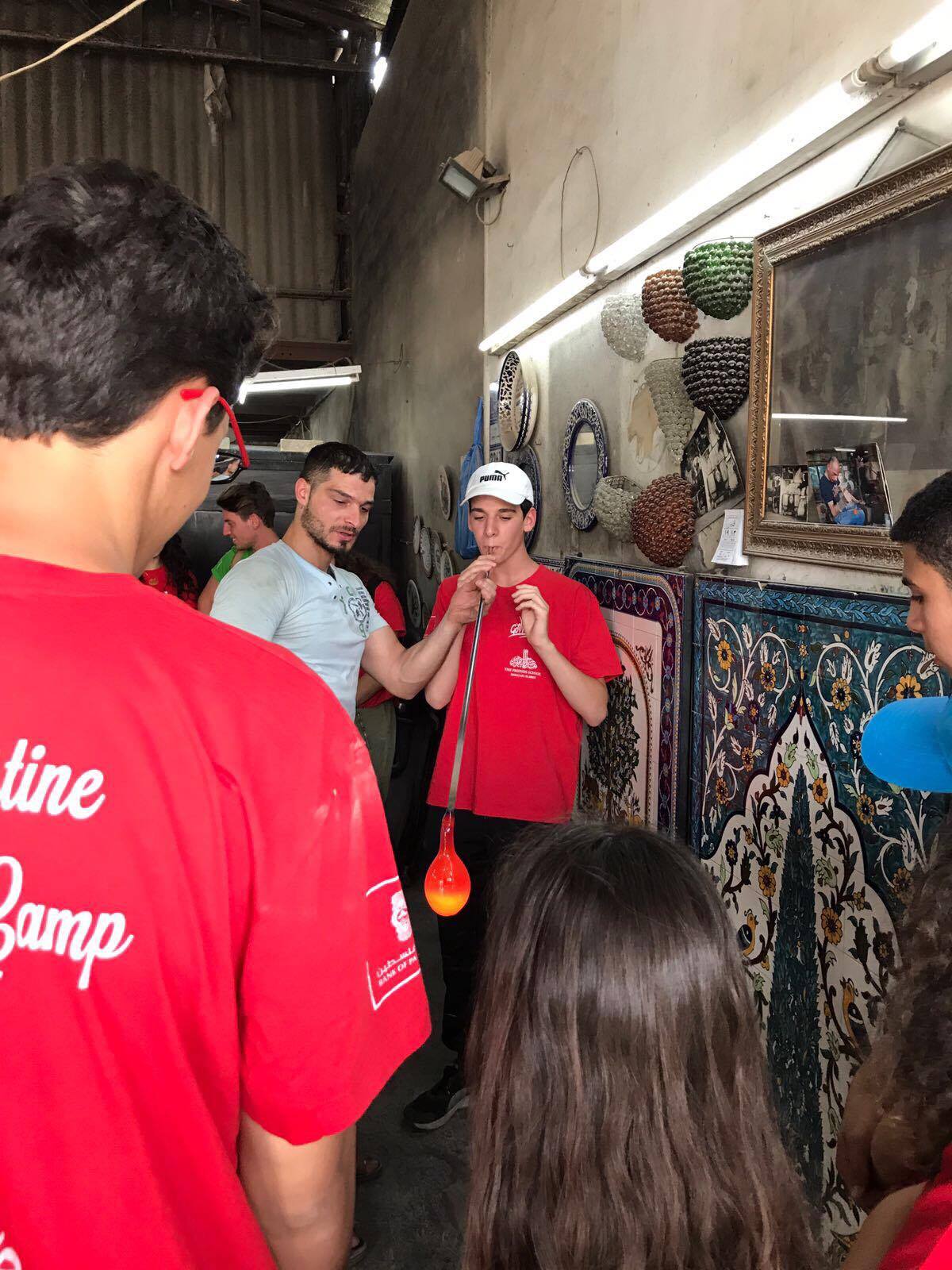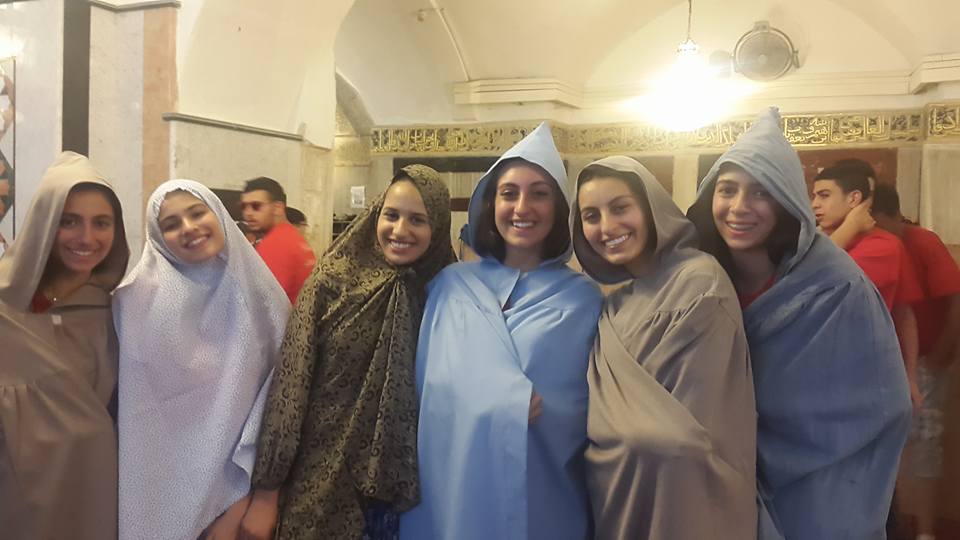Hebron
The campers made the trek south to Hebron today for an interesting perspective on the disruption caused by facets of the Occupation and how life continues on. Hebron is notorious for the enterprising economy and the ways in which economic growth has been able to sustain itself. Our first stop was a traditional glass blowing factory, where the campers were able to watch the artisans at work, masterfully creating bells, cups, jars, and figurines. Many of the campers were able to test their own breath and blew the glass themselves. We then continued on to the last remaining kuffiyeh factory in all of Palestine and watched the machines at work, interlacing the warp and weft of the fabric into long sheets of the traditionally patterned scarves. Next, we made our way into the old city of Hebron.
Walking through the streets of the old city was both lively and interesting. Many of the walls were covered in the words “Fight Ghost Town” - a reference to the closing of Shuhada Street, the epicenter of economic activity in Hebron prior to its recent forced closure. We made our way through the streets until we reached an old home where lunch awaited us. We were hosted by the family for a traditional meal of Makloubeh in their intimate multi-story home. Once we all consumed our fill, we exited back into the street and walked towards the checkpoint to enter the Ibrahimi Mosque - the burial place for Abraham, Isaac, Sara, and others of the original Prophets and their wives. Inside the mosque, we paid our respects, prayed, and also witnessed the way in which the mosque has been divided internally. The section we were able to see was specifically for Muslims, Christians, and tourists. After taking some pictures and absorbing the history, we made our way out of the complex and back towards the bus.


